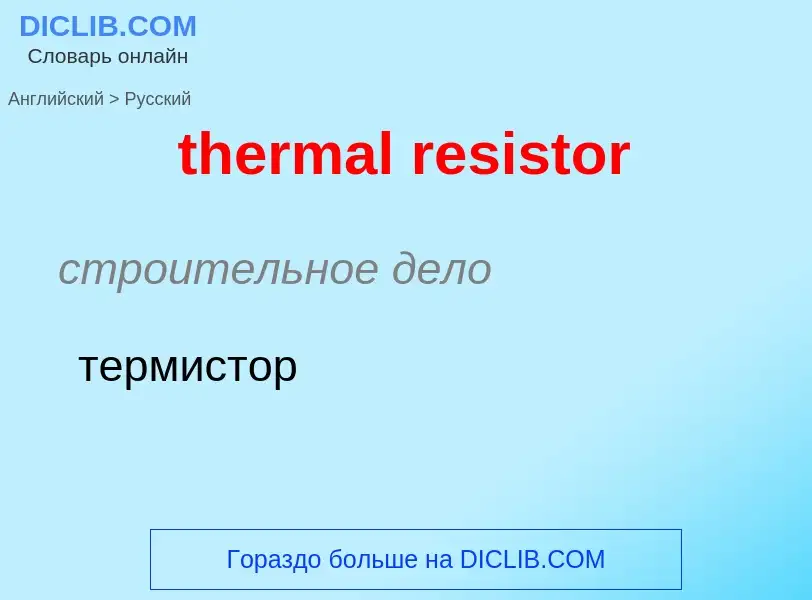Translation and analysis of words by artificial intelligence
On this page you can get a detailed analysis of a word or phrase, produced by the best artificial intelligence technology to date:
- how the word is used
- frequency of use
- it is used more often in oral or written speech
- word translation options
- usage examples (several phrases with translation)
- etymology
thermal resistor - translation to russian
строительное дело
термистор
['θə:mistə]
общая лексика
термистор
термисторный
терморезистор
термосопротивление
существительное
электротехника
термистор
терморезистор
Definition
Wikipedia
The thermal conductivity of a material is a measure of its ability to conduct heat. It is commonly denoted by , , or .
Heat transfer occurs at a lower rate in materials of low thermal conductivity than in materials of high thermal conductivity. For instance, metals typically have high thermal conductivity and are very efficient at conducting heat, while the opposite is true for insulating materials like Rockwool or Styrofoam. Correspondingly, materials of high thermal conductivity are widely used in heat sink applications, and materials of low thermal conductivity are used as thermal insulation. The reciprocal of thermal conductivity is called thermal resistivity.
The defining equation for thermal conductivity is , where is the heat flux, is the thermal conductivity, and is the temperature gradient. This is known as Fourier's Law for heat conduction. Although commonly expressed as a scalar, the most general form of thermal conductivity is a second-rank tensor. However, the tensorial description only becomes necessary in materials which are anisotropic.




